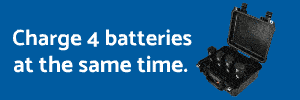- Joined
- Jun 27, 2019
- Messages
- 344
- Reactions
- 181
1 When using manual exposure, the right forward dial on Smart Controller adjusts EV by changing f-stop?
2 On most lenses there is a "sweet spot" for sharpness. I have read that M2pro lens starts getting soft at f5.6 and is much softer at f8. But most of my DSLR lenses also get soft when at widest apertures. Have experts tested all apertures? Sounds like f3.5 might be sharpest?
3 when I go into camera settings on Smart Controller, there is an EV adjustment at bottom of screen, but I assume this is not an option in manual as ISO/Aperture/ f stop are set by operator. The EV on my SC shows "-3" when set on manual. Is that just a default setting when on manual? (see attached below)
4 when shooting video, I find very slow gimbal movements to be more "cinematic" (panning, stopping etc) Is there any reason not use slow this way down in gimbal settings? Or is it better to just enter Cinematic Mode?
5 The results of smooth flying & gimbal movement looks spectacular in good videos. Are more experienced operators using Cinematic Mode or just better flying technique?
6 Anyone have an efficient technique for assessing which ND filter to attach prior to flight? Lighting conditions on ground can be very different from those at altitude. A miscalculation of ND filter could result in a really bad exposure if capturing sunrise/sunset when there's no time to land & change filters. I have the polar pro app, and also have a light meter app for iPhone. But the light at aerial view can be radically different from the LZ.
I'm trying to shorten the learning curve by mining the wisdom of experienced aerial ARTISTS. Thanks!

2 On most lenses there is a "sweet spot" for sharpness. I have read that M2pro lens starts getting soft at f5.6 and is much softer at f8. But most of my DSLR lenses also get soft when at widest apertures. Have experts tested all apertures? Sounds like f3.5 might be sharpest?
3 when I go into camera settings on Smart Controller, there is an EV adjustment at bottom of screen, but I assume this is not an option in manual as ISO/Aperture/ f stop are set by operator. The EV on my SC shows "-3" when set on manual. Is that just a default setting when on manual? (see attached below)
4 when shooting video, I find very slow gimbal movements to be more "cinematic" (panning, stopping etc) Is there any reason not use slow this way down in gimbal settings? Or is it better to just enter Cinematic Mode?
5 The results of smooth flying & gimbal movement looks spectacular in good videos. Are more experienced operators using Cinematic Mode or just better flying technique?
6 Anyone have an efficient technique for assessing which ND filter to attach prior to flight? Lighting conditions on ground can be very different from those at altitude. A miscalculation of ND filter could result in a really bad exposure if capturing sunrise/sunset when there's no time to land & change filters. I have the polar pro app, and also have a light meter app for iPhone. But the light at aerial view can be radically different from the LZ.
I'm trying to shorten the learning curve by mining the wisdom of experienced aerial ARTISTS. Thanks!

Last edited:










